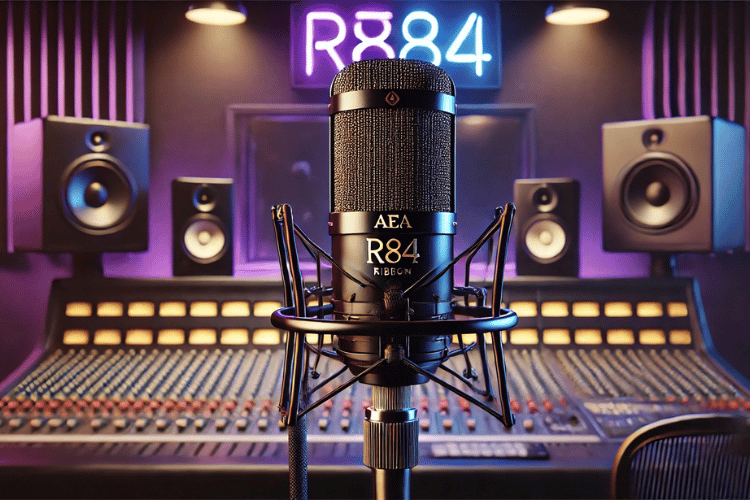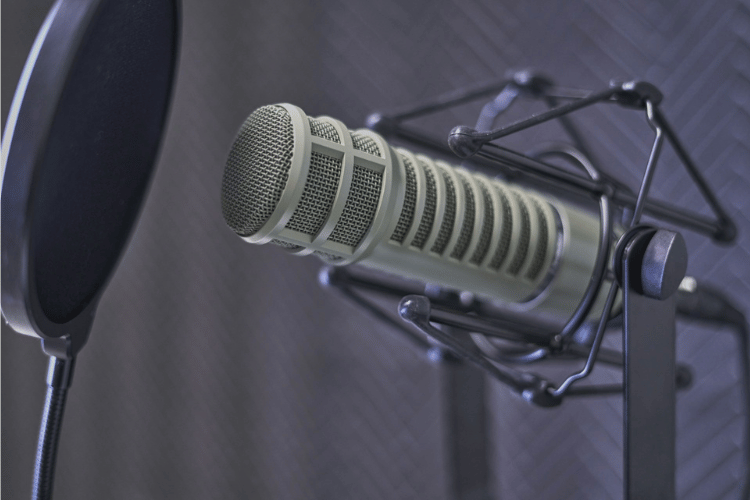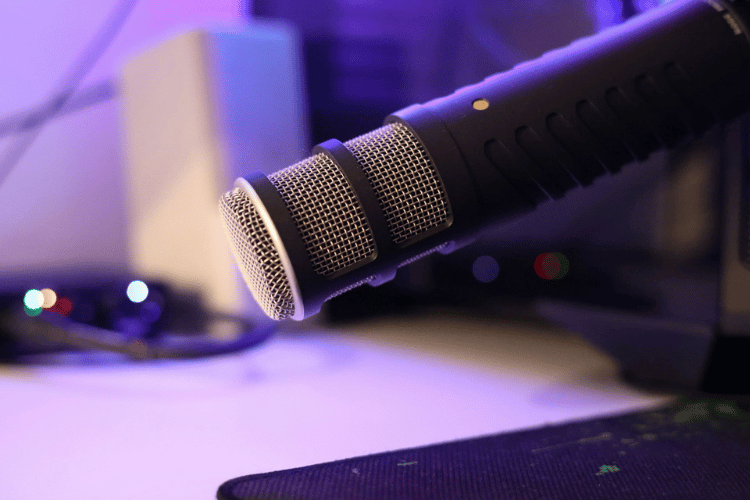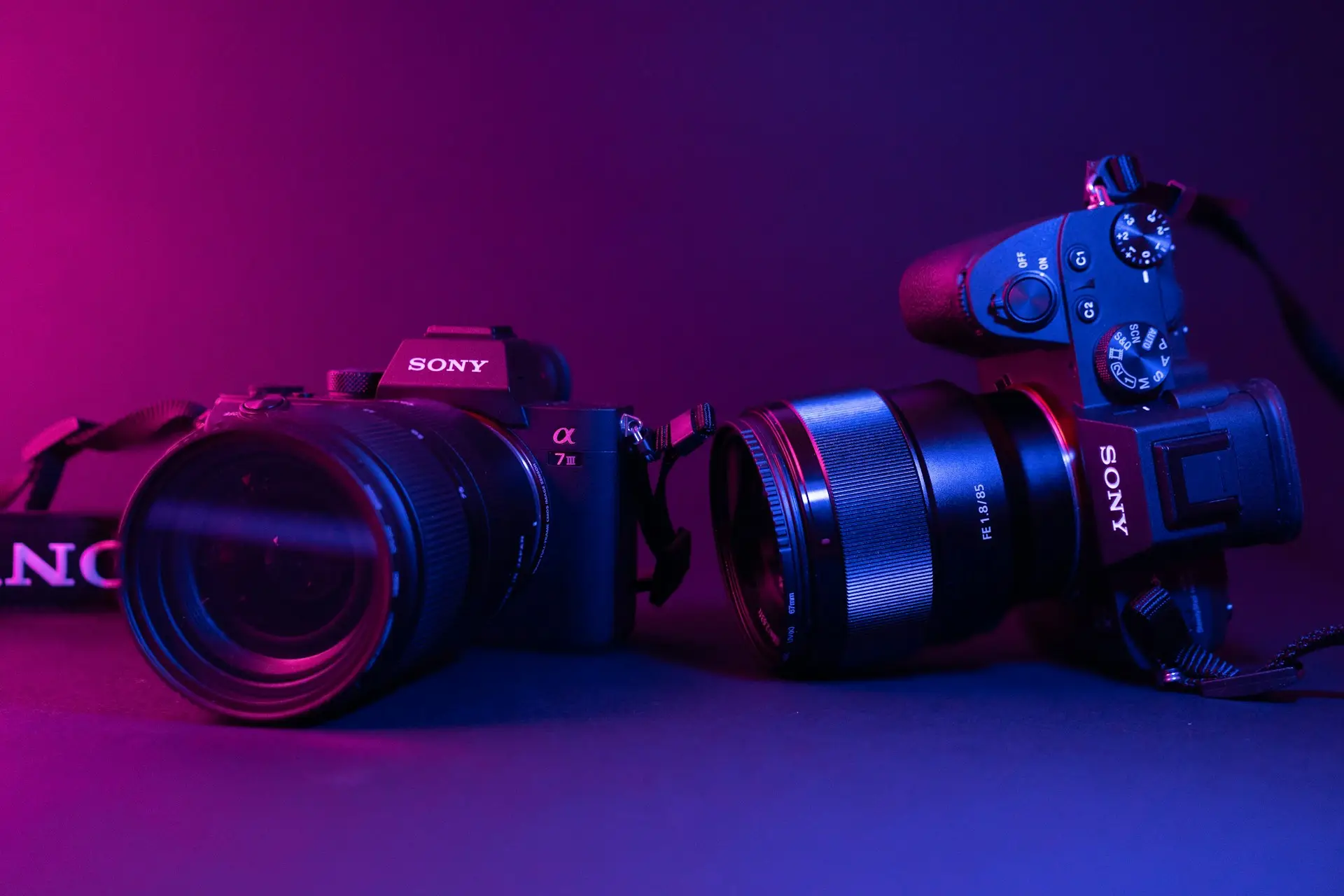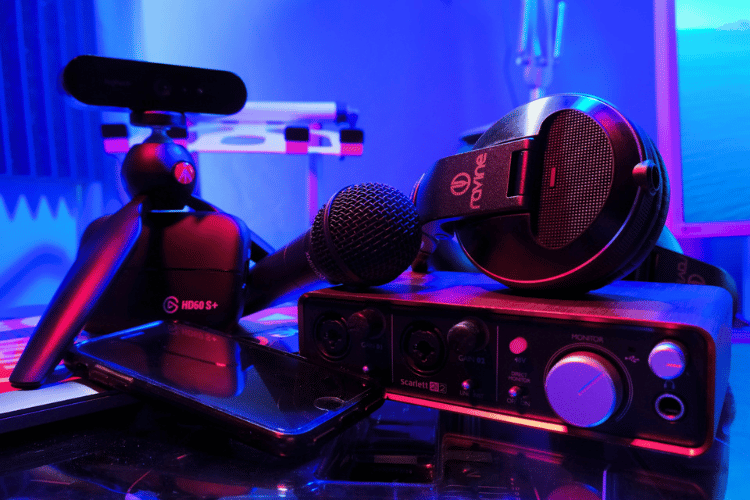
BEST MICROPHONES FOR SINGING IN 2025
Disclosure: We may earn a commission from purchases made through links in this post, but we only share products and brands we genuinely love and trust.
Are you a singer searching for the best microphones for singing in 2025? Whether you’re performing live, recording in a studio, or creating music at home, choosing the right microphone is crucial for capturing your vocal performance. This guide will help you navigate the top options, highlighting the pros and cons of each to help you find the perfect mic to amplify your unique sound.
Top Microphones for Singing in 2025: Find Your Perfect Vocal Mic
Let’s explore some of the best microphones for singing in 2025, covering various types and applications to suit every singer’s needs.
Legendary Microphones for Live Vocals:

Shure SM58: The Indestructible Live Performance Standard
(Best Microphone for Live Vocals)
The Shure SM58 is an iconic dynamic microphone and a staple for live performers worldwide.
Pros:
- Unmatched Durability: Built to withstand the rigors of live gigs, this mic is incredibly robust.
- Excellent Feedback Rejection: Its design effectively isolates your voice, minimizing unwanted stage noise and feedback.
- Warm and Clear Vocal Tone: The tailored frequency response enhances vocal warmth and clarity, ensuring your voice cuts through the mix.
- Budget-Friendly: Offers exceptional quality and reliability at an accessible price point.
Cons:
- Less Detail for Studio Recording: While great for live, it might not capture the subtle nuances needed for detailed studio recordings.
- Specific Sonic Character: Its distinct sound signature might not be ideal for all vocal styles.
Recommended Accessories:
- XLR Cable: Essential for connecting to sound systems or audio interfaces.
- Microphone Stand: A must for hands-free performance.
- Pop Filter/Windscreen: Helps reduce plosive sounds and breath noise, especially in quieter settings.

Neumann KMS 105: Studio-Quality Sound on Stage
(Premium Condenser Microphone for Live Vocals)
For vocalists seeking studio-grade sound during live performances, the Neumann KMS 105 is a top-tier condenser microphone.
Pros:
- Pristine and Natural Sound: Delivers a detailed, warm, and natural vocal reproduction.
- Excellent Feedback Rejection: Designed specifically for stage use with a tight supercardioid pattern.
- Low Handling Noise: Minimizes unwanted noise from movement on stage.
- Handles High SPL: Can handle loud vocal performances without distortion.
Cons:
- Higher Price Point: A premium microphone that comes with a significant investment.
- Requires Phantom Power: Needs a sound system or interface that provides 48V phantom power.
Recommended Accessories:
- XLR Cable: For connecting to your audio interface or mixer.
- Microphone Stand: Essential for stable positioning.
Top Studio Recording Microphones for Singers:

Neumann TLM 102: Professional Clarity for Your Studio
(Best Studio Microphone for Vocals on a Mid-Range Budget)
The Neumann TLM 102 is a fantastic condenser microphone for achieving professional vocal recordings in home and project studios.
Pros:
- Exceptional Vocal Clarity: Captures warm, articulate vocals with excellent high-end detail.
- Versatile for Various Sources: Works well for different vocal styles and acoustic instruments.
- Low Self-Noise: Ensures clean and pristine recordings.
- Compact Design: Fits easily into smaller recording spaces.
Cons:
- Consider an External Pop Filter: The built-in pop shield might not be sufficient for all vocalists.
- Requires Phantom Power: Needs an audio interface or mixer with 48V phantom power.
- Sensitive to Room Noise: Performs best in acoustically treated recording environments.
Recommended Accessories:
- XLR Cable: To connect to your audio interface.
- Pop Filter: Essential for minimizing plosive sounds.
- Shock Mount: Isolates the microphone from vibrations and handling noise.
- Microphone Stand: For optimal positioning.

Shure SM7B: The Studio Workhorse for Powerful Vocals
(Versatile Dynamic Microphone for Studio Recording)
The Shure SM7B is a legendary dynamic microphone favored in studios for its ability to capture powerful vocals, voice-overs, and even instruments.
Pros:
- Excellent for Loud Vocals: Handles high sound pressure levels without distortion.
- Warm and Smooth Sound: Provides a rich and smooth tone, ideal for rock and spoken word.
- Good Rejection of Room Noise: Performs well even in less-than-ideal acoustic environments.
- Built-in Pop Filter and Shock Mount: Reduces plosives and mechanical noise.
Cons:
- Requires High Gain: Needs a microphone preamp with significant clean gain.
- Can Sound Less Detailed: Might not capture the subtle nuances of quieter vocal performances as well as some condensers.
Recommended Accessories:
- High-Quality XLR Cable: For a reliable connection.
- Microphone Preamp with High Gain: Essential for optimal performance.
- Boom Arm: For flexible and precise microphone placement.
Convenient USB Microphones for Singing at Home:
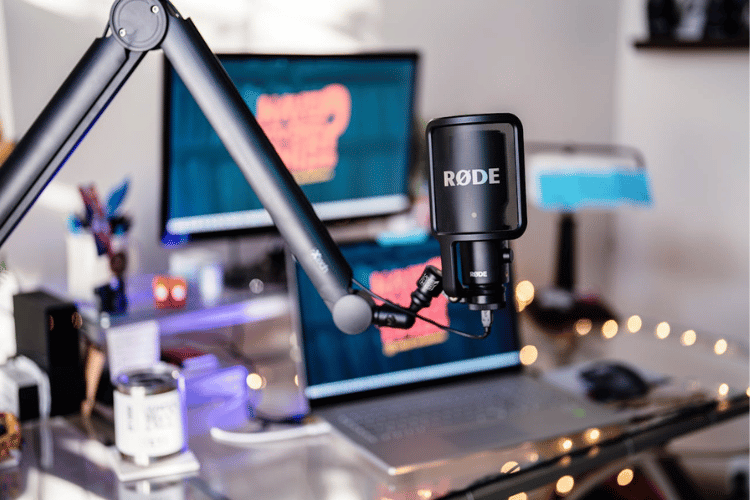
Rode NT-USB: High-Quality USB Recording Made Simple
(Best USB Microphone for Beginners and Home Recording)
The Rode NT-USB offers a user-friendly solution for recording vocals directly to your computer with excellent sound quality.
Pros:
- Studio-Grade Audio: Delivers warm and clear vocal recordings.
- Plug-and-Play USB Connectivity: Easy setup with computers and tablets.
- Includes Essential Accessories: Comes with a pop filter, tripod stand, and ring mount.
- Zero-Latency Monitoring: Features a headphone jack for real-time monitoring.
Cons:
- Cardioid Polar Pattern Only: Limited to picking up sound from the front.
- Software-Based Gain Control: Input level adjustments are made through your recording software.
Recommended Accessories:
- Included Pop Filter: Use it for cleaner recordings.
- Included Tripod Stand: Perfect for desktop use.
- USB Cable: Comes with the microphone.
- Optional Boom Arm: For more versatile positioning.
Exploring the Unique Sound of Ribbon Microphones:
AEA R84: Vintage Warmth for Modern Recordings
(Best Ribbon Microphone for Achieving a Warm, Smooth Tone)
For singers seeking a classic, warm, and smooth vocal tone, the AEA R84 ribbon microphone is a premium choice.
Pros:
- Warm and Smooth Tone: Captures high frequencies without harshness and adds depth to lower frequencies.
- Natural and Realistic Sound: Provides an accurate reproduction of vocals and acoustic instruments.
- Excellent for Bright or Harsh Vocals: Can tame sibilance and add richness.
- Versatile for Various Genres: Suitable for blues, jazz, pop-rock, and more.
Cons:
- Fragile Construction: Ribbon microphones are more delicate and require careful handling.
- Sensitive to Air Blasts: Requires a pop filter to protect the ribbon.
- Needs High-Gain Preamp: Has a lower output level and requires a preamp with significant gain.
- Higher Price Point: Generally more expensive than dynamic microphones.
Recommended Accessories:
- High-Quality XLR Cable: Ensures optimal signal transfer.
- High-Gain Microphone Preamp: Essential for proper amplification.
- Pop Filter or Windscreen: Crucial for protecting the delicate ribbon.
- Shock Mount: Isolates the microphone from vibrations.
- Microphone Stand: For stable positioning.
Versatile Microphones for Studio and Broadcast:
Electro-Voice RE20: The Broadcast Standard for Vocals
(Excellent for Studio Vocals, Voice-Overs, and More)
The Electro-Voice RE20 is a dynamic microphone renowned in broadcasting that also excels for vocal recording in studios.
Pros:
- Smooth and Natural Sound: Delivers a controlled and even sound for various voices.
- Minimal Proximity Effect: Allows for close-miking without excessive bass.
- Excellent Noise Rejection: Effectively minimizes background noise.
- Durable Build: Constructed with a rugged steel housing.
- Versatile Applications: Great for vocals, instruments, and spoken word.
Cons:
- Requires Significant Gain: Needs a preamp with plenty of clean gain.
- Can Sound Slightly “Dead”: Might lack some high-frequency sparkle for certain vocal styles.
- Heavy: Its solid build makes it quite weighty.
Recommended Accessories:
- High-Quality XLR Cable: For a reliable connection.
- Microphone Preamp with High Gain: Essential for a strong signal.
- Shock Mount: Recommended for reducing vibrations.
- Pop Filter: For minimizing explosive sounds during vocal work.
- Sturdy Microphone Stand or Boom Arm: To support its weight.
Rode Procaster: Broadcast Quality for Your Voice
(Great for Podcasting, Voice-Overs, and Singing with a Broadcast Tone)
The Rode Procaster is a dynamic microphone favored in the broadcast industry, delivering excellent results for singing with a rich, broadcast-style quality.
Pros:
- Rich, Broadcast-Quality Audio: Designed for professional-sounding vocals.
- Excellent Noise Rejection: Its cardioid pattern minimizes room noise.
- Built-in Pop Filter: Helps reduce plosive sounds.
- Durable Build: Feels solid and professional.
Cons:
- Gain-Hungry: Requires a good preamp with sufficient gain.
- Internal Pop Filter Might Not Be Enough: An external pop filter might be needed for some vocalists.
- Primarily for Vocals: Not ideally suited for recording instruments.
Recommended Accessories:
- XLR Cable: For connecting to your audio interface or mixer.
- Audio Interface or Mixer with Sufficient Gain: To power the microphone effectively.
- Pop Filter: An external one can provide extra protection.
- Shock Mount: To minimize vibrations.
- Boom Arm or Microphone Stand: Essential for proper positioning.
Choosing the Right Microphone for Your Singing Needs
Selecting the best microphone for singing in 2025 depends on your specific requirements, budget, and the environment where you’ll be recording or performing. Consider the microphone type (dynamic, condenser, or ribbon), your primary use case (live, studio, or home), your budget, your vocal style, and the acoustics of your space.
Final Thoughts on the Best Microphones for Singing in 2025
This guide provides a comprehensive overview of some of the best microphones for singing in 2025. Remember to research specific models further based on your individual needs and listen to audio samples to help you make an informed decision. The ideal microphone is the one that best captures and enhances your unique voice, empowering you to deliver your best performance.
Why the Right Microphone Matters as Much as Your YouTube Camera Setup
When building a professional singing setup, having the best microphone for singing in 2025 is just as crucial as having a high-quality camera—especially if you’re creating music content for platforms like YouTube. In fact, pairing a great mic with one of the options from our Top 6 Best Cameras for YouTube Video Making can take your audio-visual production to the next level. While cameras capture your presence, it’s your voice that truly connects with your audience. Investing in a reliable microphone ensures crystal-clear vocals, reduced background noise, and a polished sound that stands out. Whether you’re recording covers, originals, or live sessions, the right microphone can make all the difference in how your audience experiences your music.

